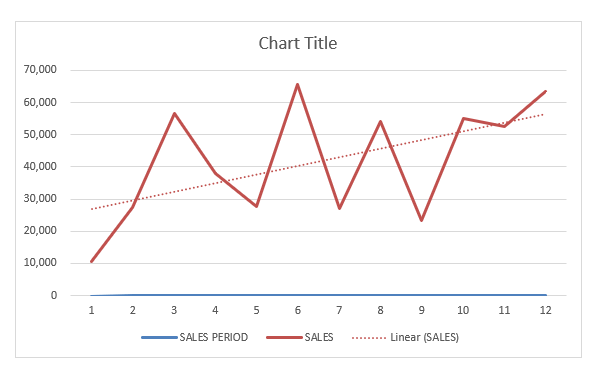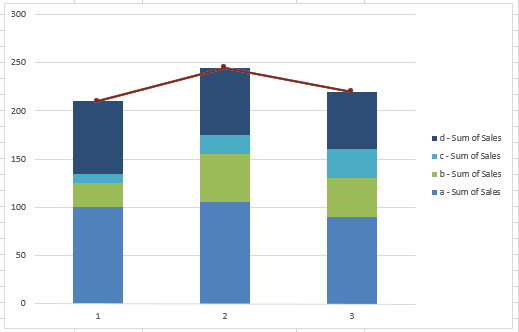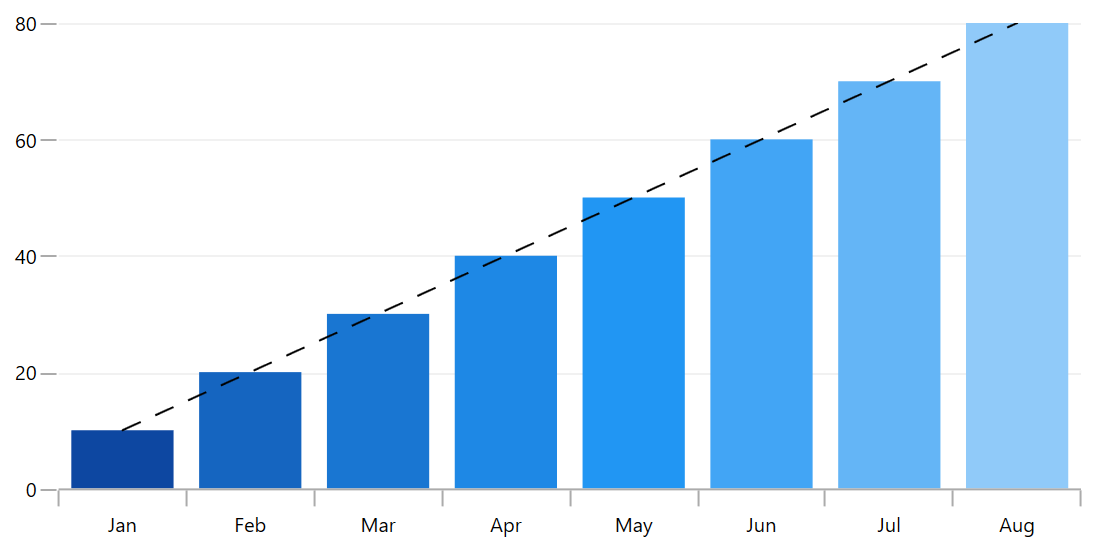


EXCEL PIVOT CHART TRENDLINE ACROSS MULTIPLE ROWS HOW TO
Now, you have a good idea about how to use PivotTables. When you filter with the timeline and slicers, the chart automatically updates. Move the chart and make it the size you want.

In the Insert Chart dialog, click the chart type you want, and click OK.įor information about different chart types, see the link in the course summary. To create a PivotChart, click a cell in your PivotTable. PivotCharts provide a visual representation of your PivotTable, making it easier to see trends. To reset the timeline, click the Clear Filter button at the top right of the timeline. You can use timelines and slicers together to filter your PivotTable data. Select the day, click an end of the selector, and drag it to cover the time period you want.Īnd the PivotTable now displays the sales for the time period. Use the slider to move along the timeline. In the upper-right of the timeline, click the drop-down arrow, and choose a timeframe, such as Days. In this example, there’s just one.Īdjust the size of the timeline and move it where you want. The Insert Timelines dialog has an option for each date field in your PivotTable. On the ANALYZE tab, click Insert Timeline. To add a timeline, click a cell in your PivotTable. To reset the slicers, click the Clear Filter button at the top right of each slicer. In the Store slicer, click Bellevue, press the Ctrl key, and click Seattle.Īnd in the PivotTable, you now see just the Cooking and Romance books sold in October at the Bellevue and Seattle stores. To see the Cooking and Romance books sold in October at the Bellevue and Seattle stores, in the Genre slicer, click Cooking, press the Ctrl key, and click Romance. This is a visual indicator that an Excel table has been created. The data will change to a striped format. Check the range encompasses all the data, and ensure my data has headers is ticked. The Insert Slicer dialog box has options for each field in the PivotTable.Ĭheck the fields you want to slice the PivotTable with, and click OK.Īdjust the size of the slicers, move them where you want, and you are ready to slice your PivotTable. Select on any cell in the first block of data and click Insert > Table (or press Ctrl + T). To add a slicer, click a cell in your PivotTable, and the PIVOTTABLE TOOLS tab appears.Ĭlick ANALYZE, click Insert Slicer. You can use Slicers and Timelines to filter your PivotTable data, and at a glance, you can see what filters are applied. Once you've created your table, you can click the PivotTable Analyze tab to view and manage more settings, or the Design tab to customize its color and style.There are lot of advanced tools in Excel to help you analyze your PivotTable data. You can add multiple data fields to any of these sections, and move things around until they look the way you'd like.

Adding fields to the Filters area lets you filter your table by the type of data in that field. Drag fields to the Columns and Rows areas, and then drag fields that represent values to the Values area. Here we discuss how to Create Pivot Table and Pivot Chart in Excel with practical examples and downloadable excel template. You'll use the Pivot Table Fields bar on the right to lay out your table in columns and rows. Click OK to place your pivot table on the selected sheet. Your new pivot table will be placed on the active worksheet by default, but you can change the sheet name and range under ""Existing Worksheet"" to put it elsewhere, or select New Worksheet to place it on its own brand new sheet. Heres how youd import multiple tables from a SQL Server database. You can add these tables to the Data Model in Excel, create relationships between them, and then use the Data Model to create your PivotTable. Or, if the data is in an external database, select Use an external data source, and then choose that database and range. Import multiple tables from other data sources including text files, data feeds, Excel worksheet data, and more. In a PivotTable, fields correspond to summary values of original data across categories. In PivotTables, fields correspond to columns in the original data. For information about different chart types, see the link in the course summary. You can enter your data range manually, or quickly select it by dragging the mouse cursor across all cells in the range, including the labeled column headers. A report is an interactive chart that allows users to change the groupings that graphically present data. In the Insert Chart dialog, click the chart type you want, and click OK. To create a pivot table, click the Insert tab, and then click the PivotTable icon on the toolbar. A pivot table is an interactive table that lets you group and summarize data in a concise, tabular format.


 0 kommentar(er)
0 kommentar(er)
